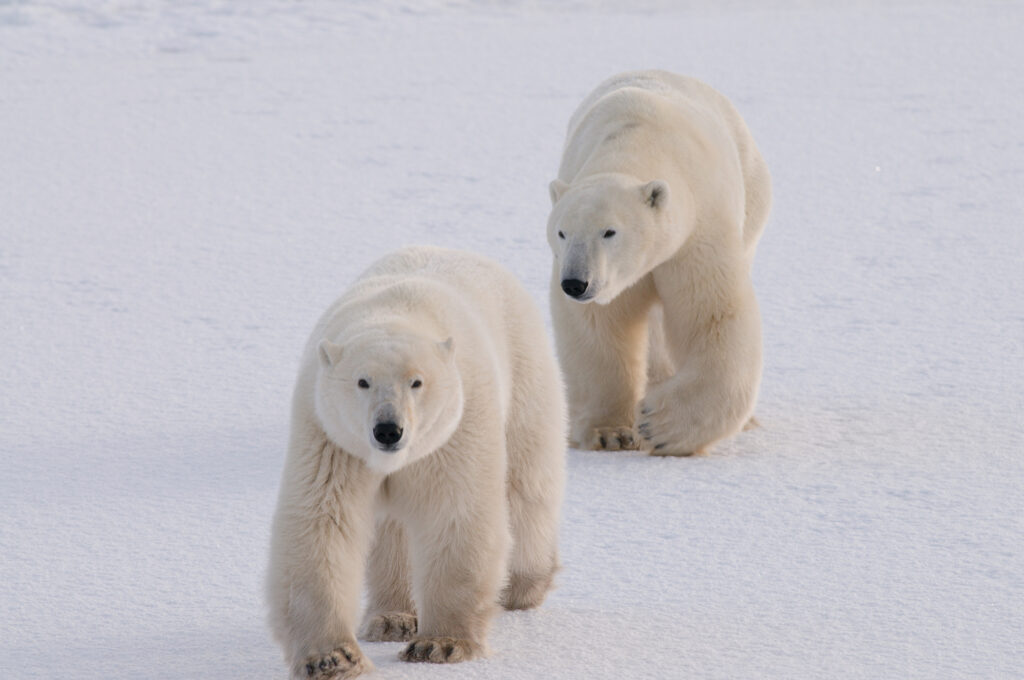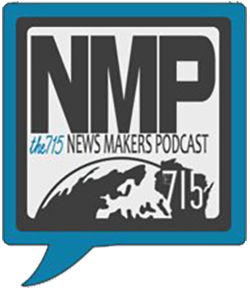University of Wisconsin-Stout alumnus Jon Kirschhoffer spent his career at 3M, a company known for making things stick like Post-It Notes and other adhesives.
When his son, BJ Kirschhoffer, director of field operations for Polar Bears International, contacted his father, an advance research specialist in the 3M Corporate Research Systems Lab, about needing a better way for researchers to track polar bears in the Arctic, 3M became the bearer of necessity and developed a number of prototype polar bear tracker tags to help the nonprofit organization.

One tracking device model is a burr on fur design. 
A polar bear with a dual lock tracking device attached
Traditionally scientists have used satellite collars to follow polar bears’ movements. However, collars can only be placed on adult females, BJ said. Adult male polar bears’ necks are as wide as their heads and the collars don’t stay on. Young bears grow too quickly to be safely collared. Transmitters could go on ear tags but require minor surgery and are permanently attached to the bears.
“My colleague Geoff York came up with the idea of making a tag stick,” BJ said. “It was time for tech to move along.”
BJ sent a polar bear pelt to his father at 3M headquarters in St. Paul. “I walked it out into the hallway and unfurled it on the floor and invited people to come see it,” said Jon, who retired from 3M at the end of December. “They came out of the woodwork. It became a catalyst for me to engage other researchers in the project.”
3M has an organization called Tech Forum, a gathering of technology special interest groups where ideas and findings can be exchanged, Jon said. The group created a workshop called Tag a Bear Challenge and met for two days to brainstorm a better way to attach a tracking tag. Tech Forum met with polar bear experts, developed ideas and created crude prototypes.
In December, the nearly two-year project moved out of the lab and into the Arctic when testing began on four prototype tags in western Hudson Bay in the far north of Manitoba, Canada. The tags are nontoxic, temporary and attach only to the bear’s fur. The transmitter will fall off when the bears naturally molt in the summer.

The prototypes range from mechanical solutions to adhesive ones and others with a little bit of everything, Jon said. Some of the concepts utilized existing 3M technologies and some ideas are completely new. All needed to be able to withstand extreme cold, snow and saltwater.
Tags also have to withstand bears rolling in the snow and other activity. One idea called the “burr on fur” approach allows the device to latch onto and stick to a bear’s fur with a brush that entangles the fur.



